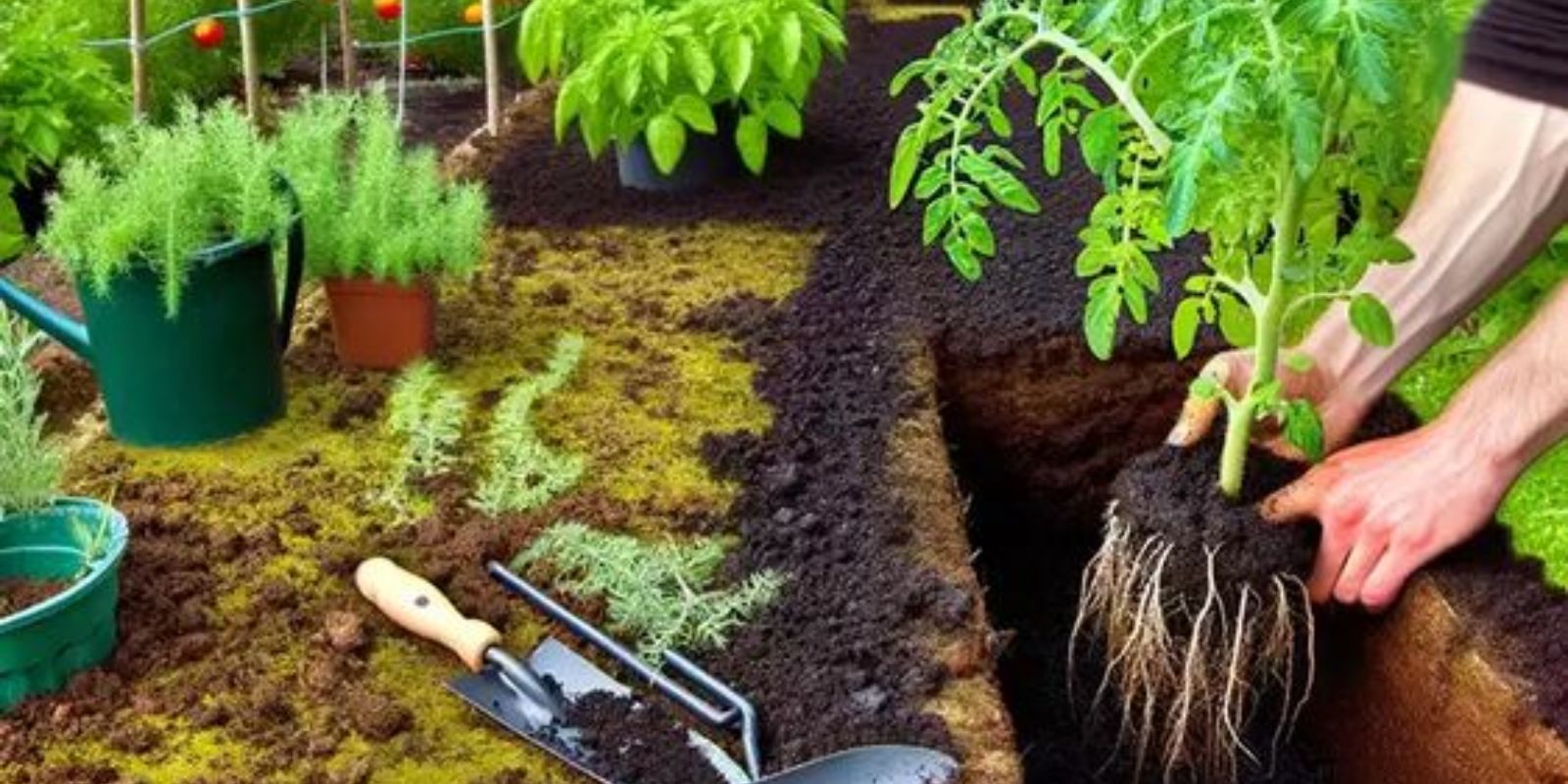When it comes to growing tomatoes, gardeners often explore various techniques to optimize plant health and fruit production. One such technique that might seem unusual but offers remarkable benefits is planting tomatoes on their side. While it might sound unconventional, this method has gained popularity for its ability to enhance root development and overall plant vigor. In this article, we will delve into why planting tomatoes on their side works so effectively, provide a step-by-step guide to the process, and explore the advantages of this innovative approach.
Introduction: The Unconventional Tomato Planting Technique
Tomatoes are a staple in many gardens, prized for their delicious fruits and versatility in cooking. Traditional planting methods usually involve placing tomato seedlings upright in the soil. However, planting tomatoes on their side is an alternative technique that offers several benefits. This method is not only effective but also relatively simple to implement, making it an excellent option for gardeners seeking to improve their tomato yields and plant health.
Why Planting Tomatoes on Their Side Works
**1. *Enhanced Root Development:*
When you plant tomatoes on their side, you encourage the development of additional roots along the buried portion of the stem. Tomatoes have the unique ability to grow roots from their stems, a trait known as adventitious rooting. By burying a significant portion of the stem, you promote the growth of these extra roots, which improves the plant’s overall stability and nutrient uptake.
**2. *Improved Nutrient Absorption:*
With more roots in contact with the soil, the tomato plant can absorb nutrients more efficiently. The additional root system enhances the plant’s access to essential minerals and water, leading to healthier growth and potentially higher fruit production.
**3. *Stronger Plant Structure:*
Planting tomatoes on their side helps the plant develop a stronger, more robust root system. A well-established root system provides better support to the plant, reducing the risk of it toppling over or becoming unstable as it grows taller and bears fruit.
**4. *Extended Growing Season:*
Burying the stem helps to insulate the plant’s roots and keep them at a more consistent temperature. This can extend the growing season, allowing the plant to thrive even in cooler conditions and potentially produce fruit earlier than plants grown using traditional methods.
**5. *Disease and Pest Resistance:*
A stronger root system and improved nutrient uptake can make the tomato plant more resilient to diseases and pests. Healthy plants are better equipped to fend off common tomato issues such as blight or root rot, resulting in a more bountiful harvest.
Step-by-Step Guide to Planting Tomatoes on Their Side
**1. *Prepare the Soil:*
Choose a sunny location with well-drained soil for planting. Tomatoes thrive in soil that is rich in organic matter, so consider adding compost or aged manure to improve soil fertility. Ensure the soil is loose and well-aerated to support healthy root growth.
**2. *Select Your Tomatoes:*
Choose healthy tomato seedlings or small plants for this method. Young, strong plants are ideal for this technique, as they will have a better chance of developing a robust root system.
**3. *Dig a Trench:*
Dig a shallow trench about 6-8 inches deep. The trench should be long enough to accommodate the length of the tomato seedling or plant. The depth allows for ample soil coverage while keeping the plant’s top exposed.
**4. *Position the Seedlings:*
Gently lay the tomato plant on its side in the trench, positioning it so that the top leaves are facing upwards. Bury the plant up to the top leaves, ensuring that the stem is adequately covered with soil. If the plant is tall, you may need to trim it slightly to fit.
**5. *Cover and Water:*
Fill in the trench with soil, covering the buried portion of the stem. Firm the soil gently to eliminate air pockets and provide good soil-to-stem contact. Water the area thoroughly to help settle the soil and promote root establishment.
**6. *Provide Support:*
As the tomato plant grows, it will need support to keep it upright. Use stakes or cages to provide structural support and prevent the plant from flopping over. Secure the plant gently to the support structure to avoid damaging the stem.
**7. *Monitor and Maintain:*
Regularly check the plant for signs of stress or pests. Water as needed, ensuring the soil remains consistently moist but not waterlogged. Mulch around the base of the plant to retain moisture and suppress weeds.
Additional Tips for Success
- Choose the Right Varieties: Some tomato varieties are better suited for this planting method. Determinate varieties, which are bushier and grow to a specific height, often benefit more from this technique than indeterminate varieties, which continue to grow and produce fruit throughout the season.
- Be Patient: It may take some time for the plant to adjust to its new growing environment. Be patient and allow the roots to establish themselves before expecting significant growth or fruit production.
- Observe Growth Patterns: Monitor the plant’s growth and adjust care practices as needed. Look for signs of healthy development, such as strong, green foliage and consistent fruit production.
- Experiment and Adapt: While this technique is generally effective, results can vary based on soil conditions, climate, and tomato variety. Experiment with different methods and adapt your approach based on your specific gardening environment.
Conclusion
Planting tomatoes on their side is a unique and effective technique that offers numerous benefits for gardeners. By promoting enhanced root development, improved nutrient absorption, and a stronger plant structure, this method can lead to healthier, more productive tomato plants. With a straightforward approach and a few simple steps, you can unlock the full potential of your tomato garden and enjoy a bountiful harvest.
Ready to try this innovative planting technique? Give it a go and share your experiences or ask for more tips below! 🍅🌿🌟

